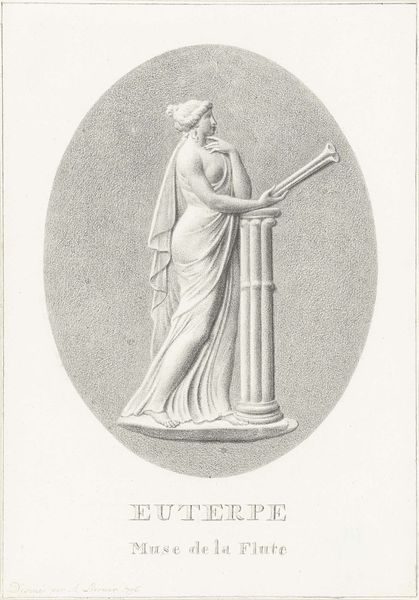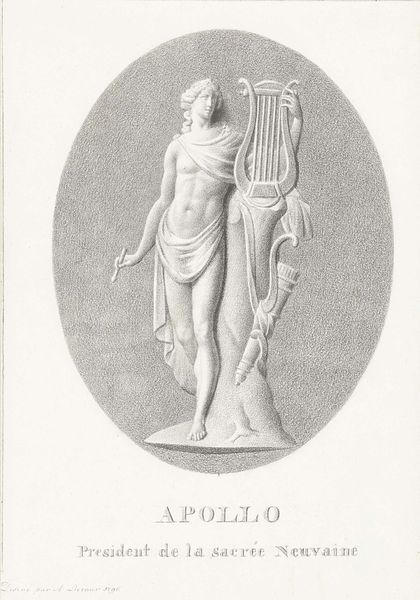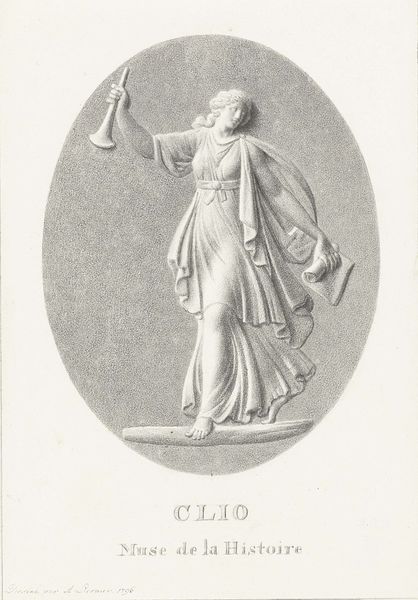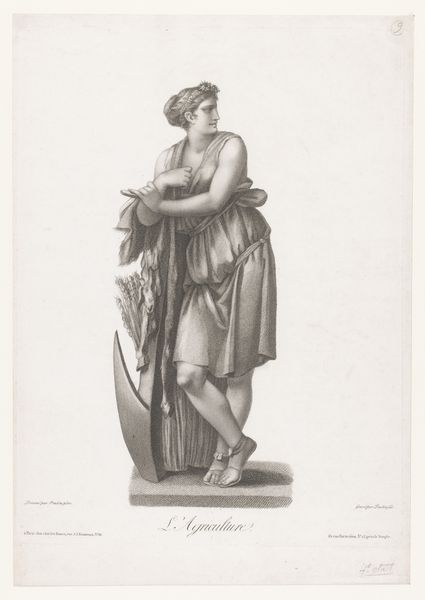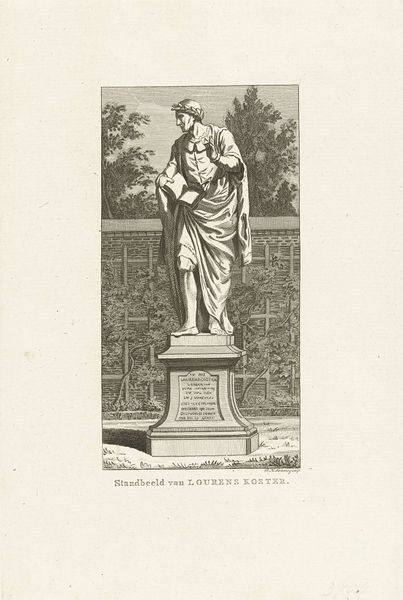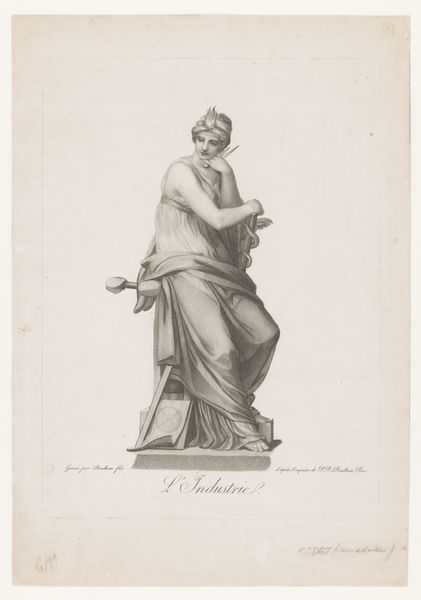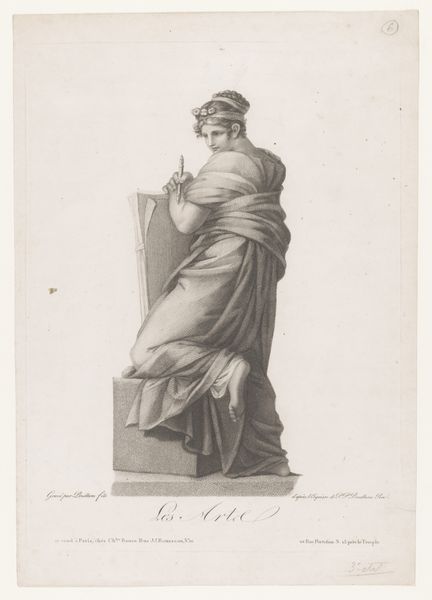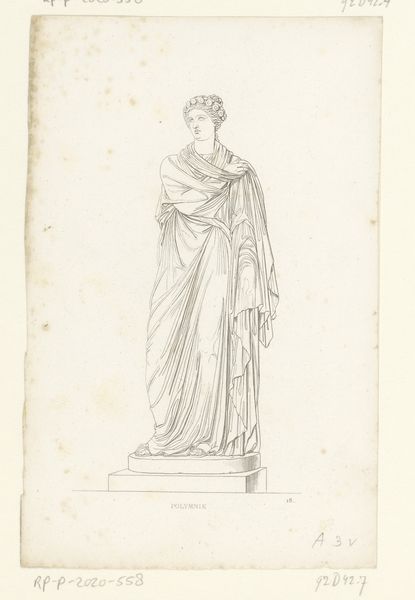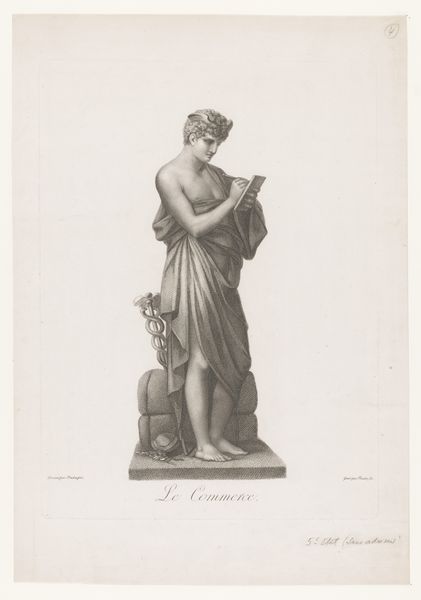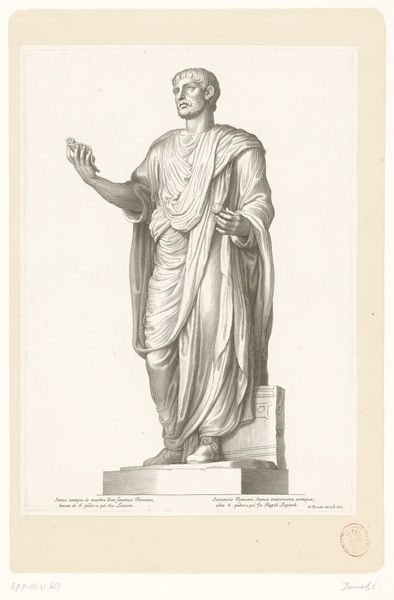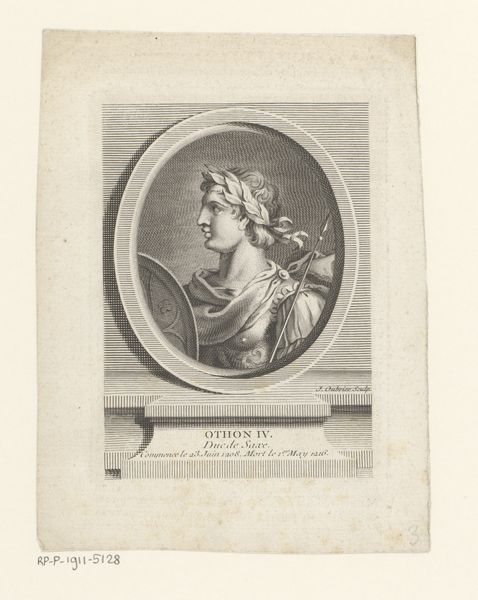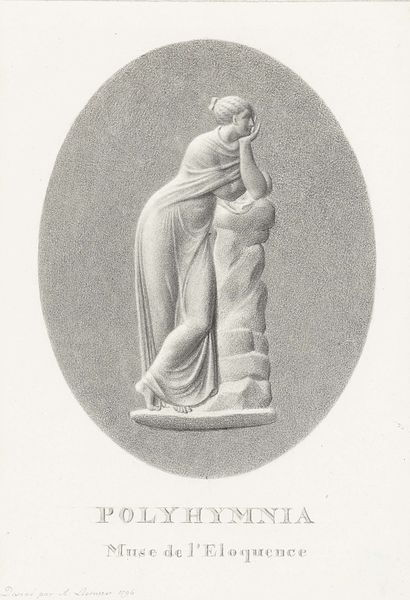
drawing, pencil
#
portrait
#
drawing
#
neoclacissism
#
allegory
#
classical-realism
#
pencil drawing
#
pencil
Dimensions: height 241 mm, width 169 mm
Copyright: Rijks Museum: Open Domain
Editor: This is Alexander Liernur's 1796 pencil drawing of Terpsichore, the muse of dance. It feels almost like a classical sculpture, even though it’s a drawing. What do you see in this piece? Curator: I see a careful meditation on the social currency of antiquity during the late 18th century. This isn't just a simple illustration; the choice of pencil, mimicking the texture of marble, and the very deliberate staging—Terpsichore perched on a rough-hewn block, seemingly hewn from a quarry, playing her lyre—speaks to a fascination with the means of production. It almost romanticizes the labor, doesn't it? Editor: It does! Like a perfect moment captured right at the source. It also strikes me as an allusion to high culture. Curator: Exactly! Liernur challenges the viewers. Is it a high art sculpture, a humble drawing, or a representation of the value attributed to classicism? I'm curious, what kind of labor went into the materials used in the artwork, from pencil production, to the types of papers available, how this access determined artistic license and consumption of art at this time. Editor: That's a side of art I hadn’t considered before—the kind of resources and industries necessary to create art and how the production of art in this time differed across places and status. I now see that drawing is more than just a drawing. Curator: Absolutely, we need to be inquisitive about the means of making the art, who did it, what was made from and its consumption in a larger social context. What was considered ‘art’ in comparison to craft, and how the perception of this affects today's artistic judgment.
Comments
No comments
Be the first to comment and join the conversation on the ultimate creative platform.
